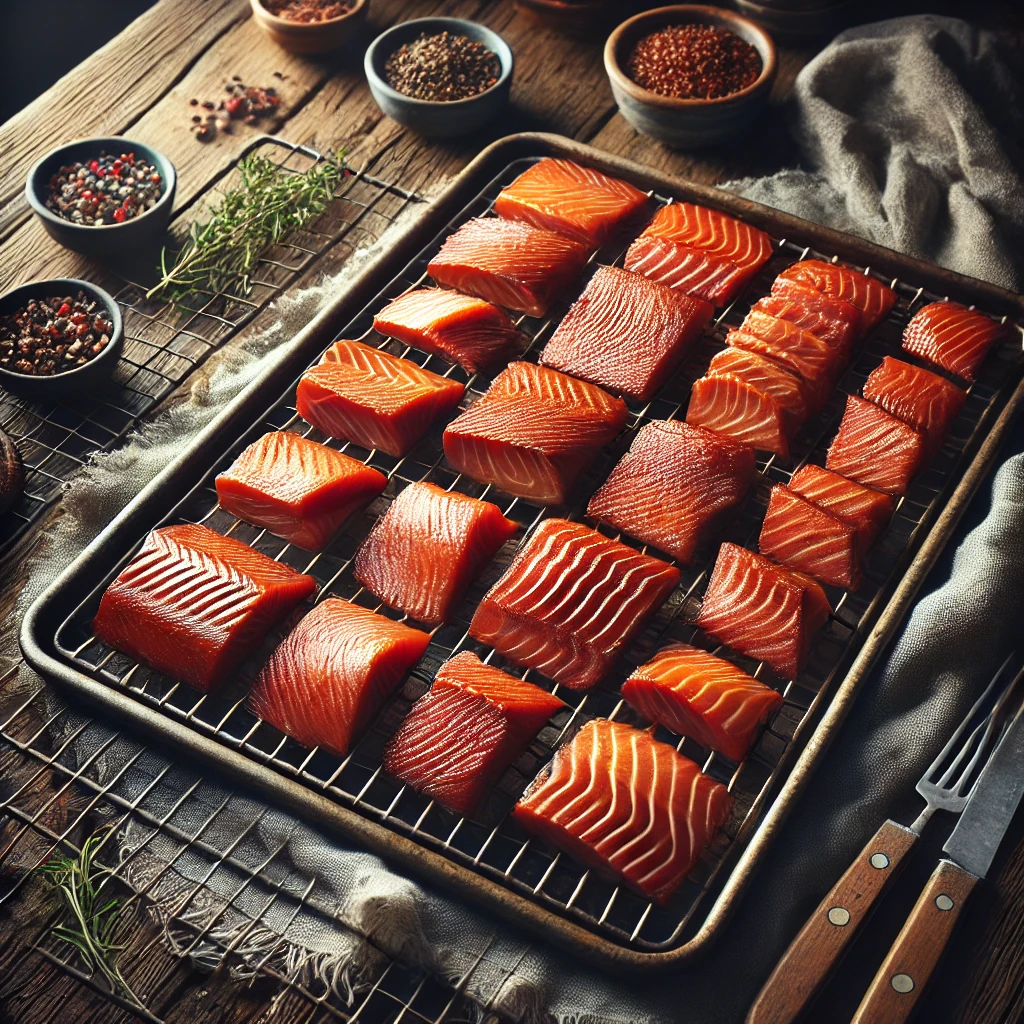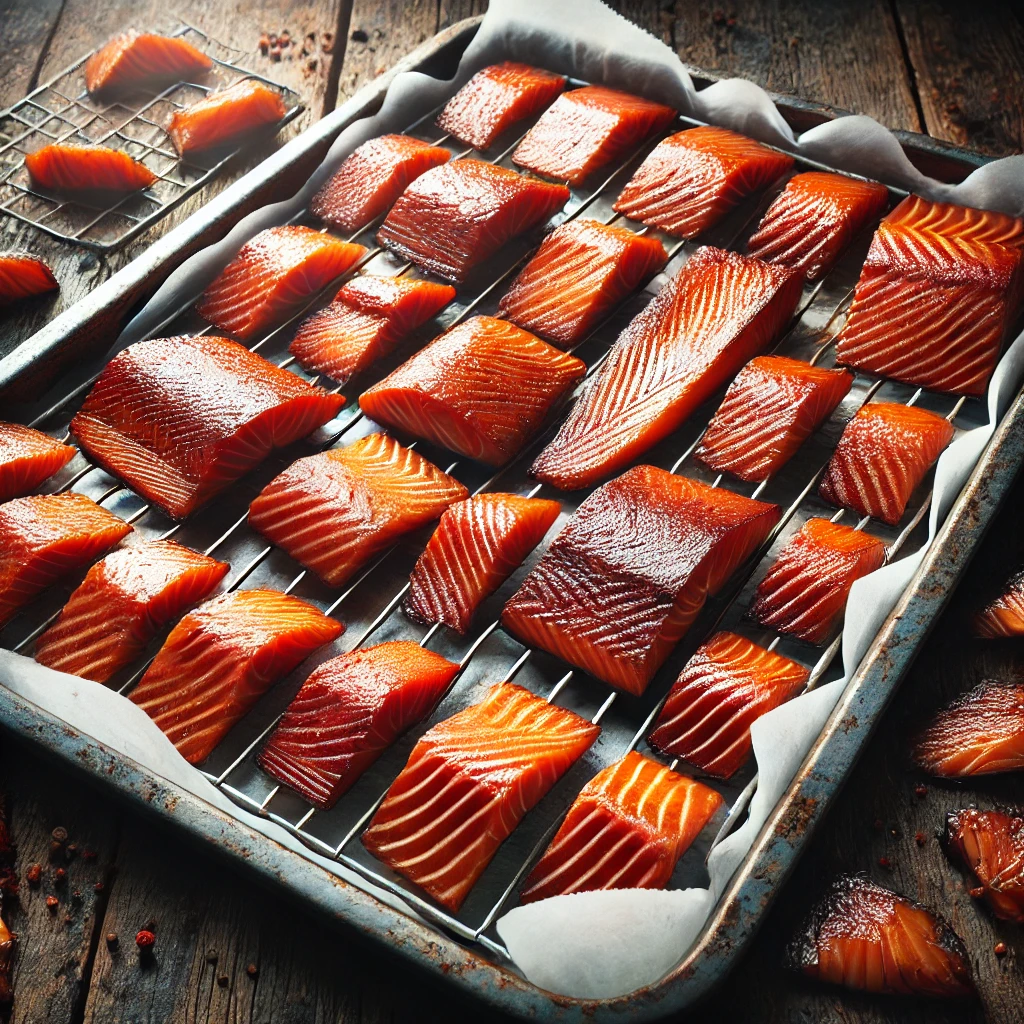



This recipe focuses on hot smoking, not to be confused with cold smoking, which produces the sliceable smoked fish typically found in upscale Scottish boxes.
Hot smoking is widely practiced in Salmon Country. If you're new to hot-smoked fish, imagine the golden smoked whitefish you might see in delis; that's a classic example of hot-smoked fish.
Wondering how to eat it? You can enjoy it plain, flake it into a smoked salmon salad, mash it with butter for salmon rillettes, add it to deviled eggs, mix it with pasta—the options are plenty!
Combine the brine ingredients and place your fish in a non-reactive container, such as plastic or glass. Cover and refrigerate the fish. This curing process removes some moisture from the fish while infusing it with salt, which helps to preserve the salmon. For thin fillets, like those from trout or pink salmon, a minimum of 4 hours is needed for curing. Larger trout, char, pink, sockeye, and silver salmon typically require 8 hours, while a thick piece of king salmon may need up to 36 hours in the brine. Avoid exceeding 48 hours, as this will make the fish too salty. If the brine does not completely cover the fish, double the recipe.

After brining, remove the fish and briefly rinse it under cold running water, then pat it dry.
Place the fillets on a cooling rack, skin side down. Ideally, dry the fish under a ceiling fan set on high or in a cool, breezy area (60°F or cooler) for 2 to 4 hours, or even overnight in the fridge. This allows the surface of the fish to develop a shiny layer known as the pellicle, which is crucial for proper smoking. The pellicle provides a protective, sticky surface that helps smoke adhere to the fish. Don’t worry about spoilage; the salt in the brine will keep the fish safe. Once the pellicle forms, you can refrigerate the fish for a few hours before smoking.

Before smoking, lightly coat the skin of the fish with oil to prevent sticking. Even though this is hot smoking, avoid high temperatures. Start with a small fire, gradually increasing the heat to prevent the white albumin from seeping out of the meat. If your smoker has adjustable heat, begin the process between 140°F and 150°F for about an hour, then raise the temperature to 175°F for another hour or two. Keep in mind that the smoker's settings may not reflect the actual temperature; smoking is more art than science. To maintain mild temperatures, add water to your drip pan, or use ice if your smoker runs hot.

After an hour in the smoker, baste the fish with birch or maple syrup, or honey, repeating every hour. This helps to minimize albumin formation, although a little is normal.
Aim for an internal fish temperature of 130°F to 140°F. I keep the smoke going throughout the process, but if you prefer a lighter smoke, you can finish the salmon in a 200°F oven without smoke.
Be cautious with your heat; high temperatures are a common mistake when smoking salmon and can cause excessive albumin, which makes the fish look unappealing and dry.
Final Tip: When using your smoker, try to fill it up completely with fish. Smoking takes a significant amount of time, and whether your smoker is full or half-empty, the process remains the same. Therefore, it's more efficient to make a larger batch. Remember, this recipe is for basic smoked salmon, but you can also try making smoked salmon candy for a tasty snack. Once you have your smoked salmon, you can use it in a delicious smoked salmon dip to enjoy with crackers.
Nutrition Information
Serving Size: 113g
Calories: 132 kcal
Protein: 21.3g
Fat: 4.9g
Saturated Fat: 1.1g
Polyunsaturated Fat: 1.1g
Monounsaturated Fat: 2.3g
Cholesterol: 26.7mg
Potassium: 198.7mg
Vitamin A: 100 IU
Calcium: 10mg
Iron: 1mg
Please note that the nutrition information is automatically calculated and should be considered an estimate.